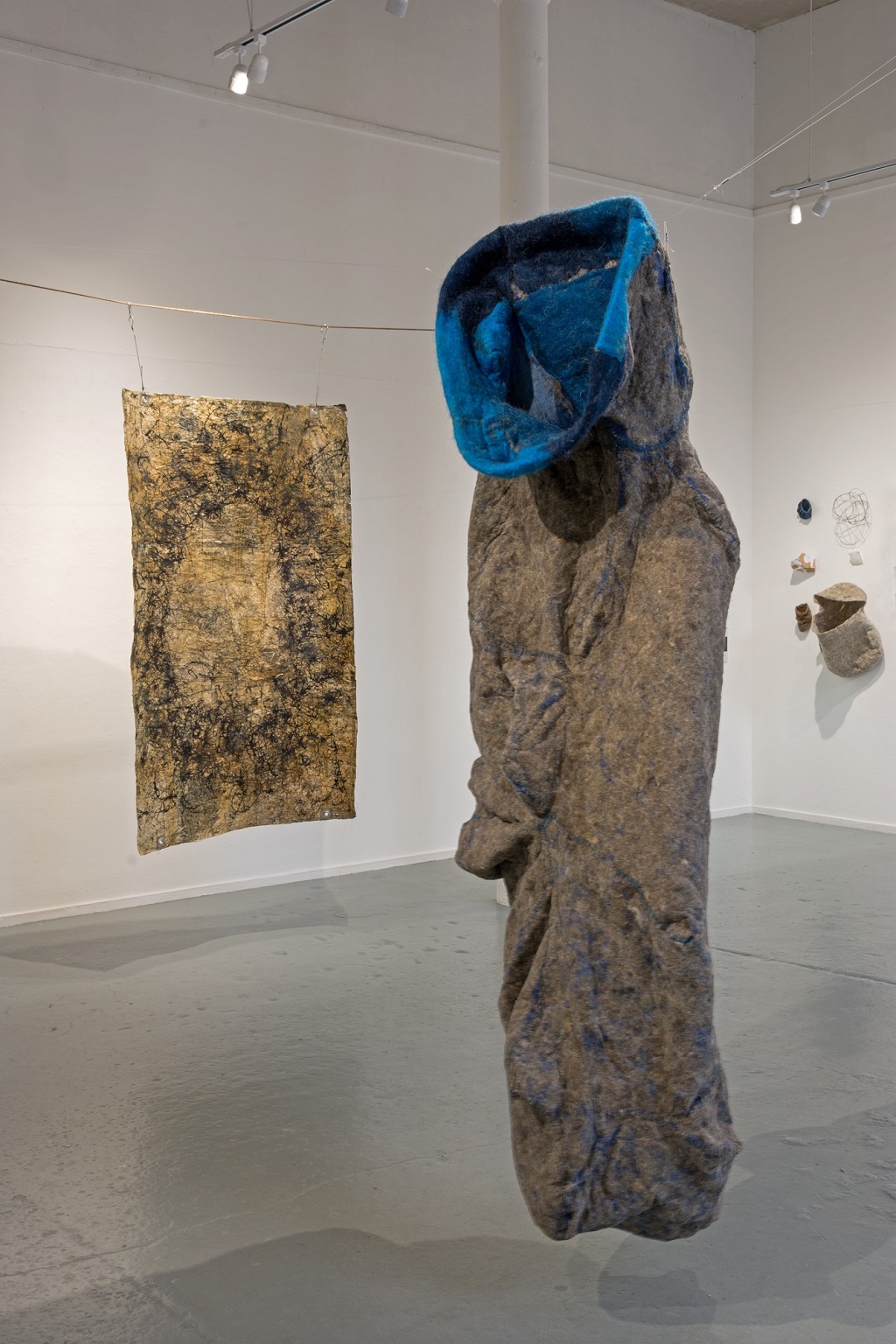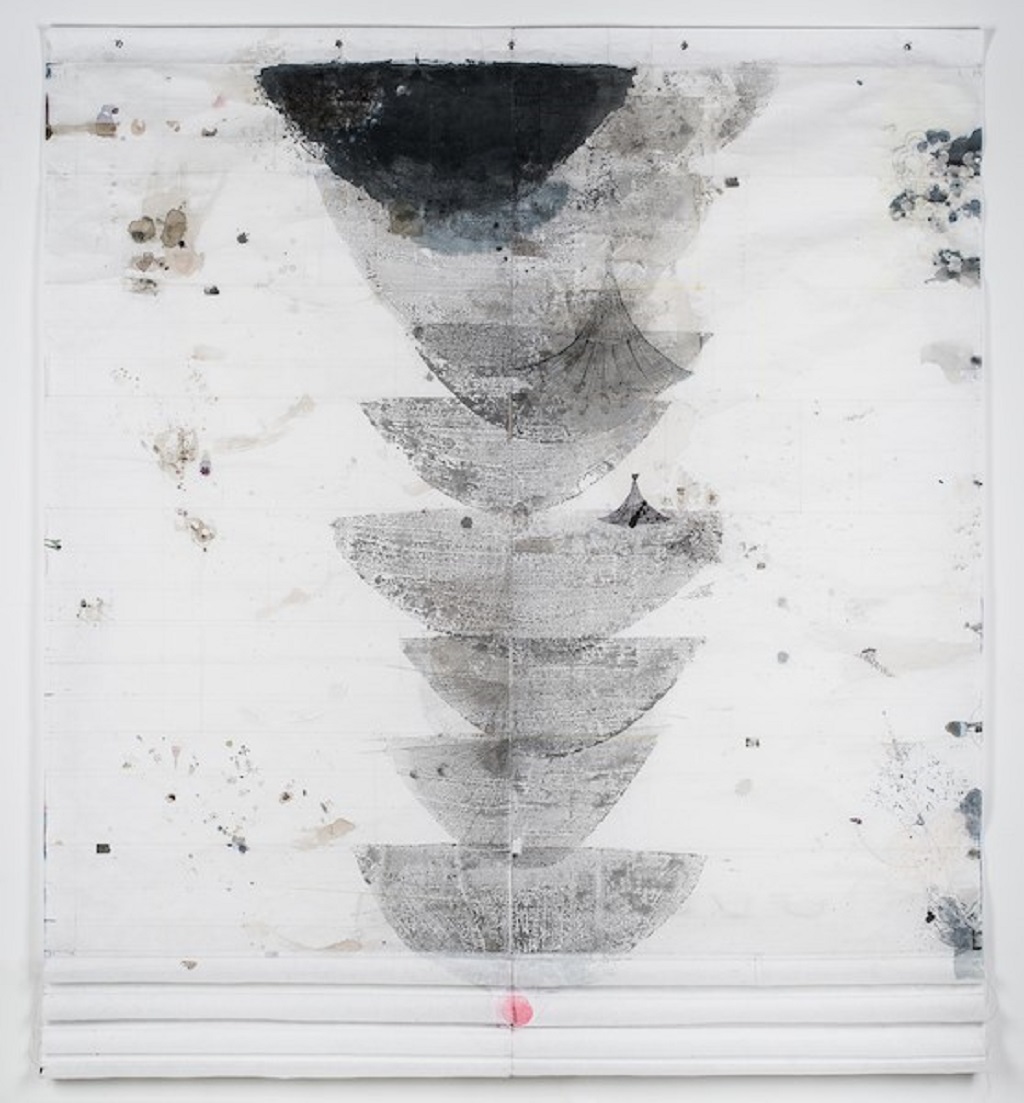
Still time to see exhibition from three artists
An exhibition created by three artists using artefacts from the Hawick Museum archive is coming to a close.
Focusing on the rural environment of the Scottish Borders, artists Liz Douglas, Felicity Bristow, and Jenny Pope interpret artefacts from Borders Museums, managed by charity Live Borders, in ways which question and challenge audiences.
Borders-based artist, Liz Douglas’ work involves researching material from the landscape at macro and micro level in order to make artwork using materials that resonate with her ideas. Her main aim is to find innovative ways that challenge her perception of landscape using contemporary art practice.
The ‘thirteen drifty days’, a ferocious snowstorm recorded in the Borders fascinates Liz. She has focussed on an 18th-century shepherd’s lantern from the Live Borders Museum Archive as a tool to inspire new work in both two and three dimensions.

An installation created by Jenny Pope
Jenny Pope is a Borders-based visual artist producing a range of work from small delicate objects to large-scale sculptural pieces. At the core of her practice is experimentation with the limits and possibilities of materials such as porcelain, ink, felt, textiles, and paper. She uses the analogy of weathering objects to suggest the uncertainty and changes we all face as human beings.
Jenny’s interest in tools and in particular the artefacts in the Domestic Room – and the Poachers Riddle specifically – have inspired her to create objects with new functions.
Visual artist, Felicity Bristow explores the complexities of the ‘analogue book’ and develops the theme of ‘transformation and abstraction of the book as an object’. The sculptural pieces she makes act as visual tools for interpreting architectural spaces, the landscape, or physical movement.
For this exhibition, Felicity’s work has been inspired by pieces from the Domestic Room of the Hawick Museum these include; a portable Sphymograph which was designed to record blood pressure, the Cachet-making machine, and a wrap of ‘Reckitt’s Bag Blue’ a washing block made from synthetic ultramarine and baking soda.

Art by Liz Douglas
Felicity has worked with the idea of physical and mental ‘flooding’ from natural, physical and emotional sources and has been developing methods of making that can be used to create ‘pauses’ to calm the mind and body.’
Felicity’s research is conducted and informed by using real-time scientific methods revealing ephemeral and alternative truths about site-specific natural and built environments and include instinctive choreographed acts of making in collaboration with the audience, other artists, chemists, and movement practitioners.
Richard White, assistant curator at Hawick Museum, said: ‘We are delighted to have these artists exhibiting in our newly refurbished Scott Gallery. This is an interesting exhibition which is sure to make people think. As a charity, Live Borders aims to make people healthier, happier and stronger and visiting this exhibition should certainly help make people happier.’
Tools for Survival: A Conversation Between Three Artists runs until 1 March 2020 in the Scott Gallery at Hawick Museum. Opening times: Monday to Friday noon-3pm, Sunday 1-3pm. Closed Saturdays.
Admission is free and donations are welcome. As a charity, Live Borders welcomes donations to continue working towards its aims of making people healthier, happier and stronger. Visit www.liveborders.org.uk
TAGS

